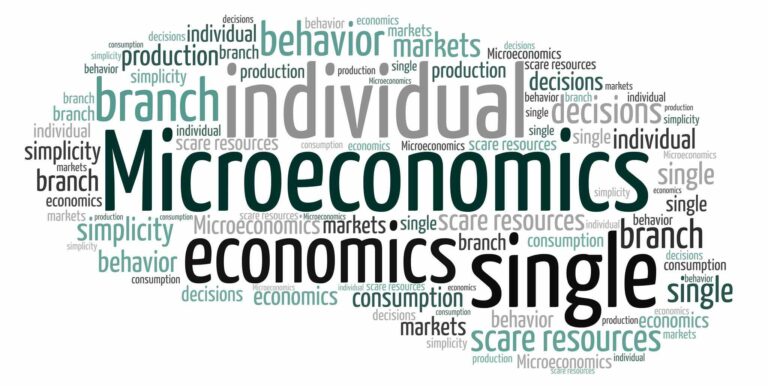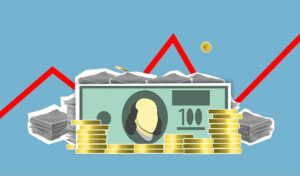Microeconomics: meaning, powers, and more

Welcome to the fascinating world of microeconomics! As a fundamental branch of economics, microeconomics examines the behavior and decision-making of individual economic agents, such as consumers, producers, and firms, and their interactions within markets.
Through the lens of microeconomics, we gain a deeper understanding of how these agents allocate resources, make choices, and respond to changes in incentives, prices, and market conditions. From supply and demand analysis to the concept of elasticity, microeconomics provides the building blocks for comprehending the intricacies of market dynamics and economic behavior at the micro level.
In this article, we will delve into the meaning of microeconomics, explore its key concepts, and shed light on its relevance in understanding the complexities of the modern economic landscape.
Meaning of microeconomics
Microeconomics is a fundamental branch of economics that delves into the intricate workings of individual economic agents and their decision-making behavior. At its core, microeconomics seeks to unravel the complex web of interactions between consumers, producers, and firms within markets. By examining how these agents allocate resources, make choices, and respond to changes in incentives and prices, microeconomics provides valuable insights into the foundation of economic behavior.
At the heart of microeconomics lies the concept of economic agents, which encompasses consumers, producers, and firms. Consumers are individuals or households who demand goods and services to satisfy their wants and needs. Producers, on the other hand, are entities that create goods and services to be sold in markets. Firms are a subset of producers, typically referring to businesses or companies that engage in production activities.
Demystifying microeconomics
Microeconomics provides a framework for understanding the complex dynamics of markets, which are the fundamental units of economic activity. Markets are where buyers and sellers interact to exchange goods and services, and microeconomics sheds light on how these interactions shape economic outcomes.
The forces of supply and demand play a central role in microeconomic analysis. Supply refers to the quantity of a good or service that producers are willing and able to sell at various prices, while demand represents the quantity of a good or service that consumers are willing and able to buy at different prices. The interaction between supply and demand determines the equilibrium price and quantity in a market, known as the market equilibrium.
Changes in market conditions, such as shifts in supply or demand, can have significant impacts on market outcomes. For example, an increase in demand for a good or service can result in a higher equilibrium price and quantity, while a decrease in demand can lead to the opposite. Similarly, changes in supply, such as technological advancements or changes in production costs, can also affect market outcomes.
Microeconomics also delves into the concept of elasticity, which measures the responsiveness of quantity demanded or supplied to changes in price. Price elasticity of demand measures how sensitive the quantity demanded of a good or service is to changes in its price, while price elasticity of supply measures how sensitive the quantity supplied of a good or service is to changes in its price. Understanding elasticity is crucial for businesses and policymakers in determining how changes in prices will affect demand and supply in markets.
The power of microeconomics
One of the core concepts in microeconomics is the analysis of supply and demand, which plays a pivotal role in resource allocation in the economy. Supply and demand determine how resources, such as goods, services, and factors of production (e.g., labor and capital), are allocated among different uses and individuals.
Supply refers to the quantity of a good or service that producers are willing and able to sell at various prices, while demand represents the quantity of a good or service that consumers are willing and able to buy at different prices. The interaction between supply and demand in markets determines the equilibrium price and quantity, where the quantity supplied equals the quantity demanded.
Supply and demand analysis also sheds light on how changes in market conditions can impact resource allocation. For instance, an increase in demand for a good or service can result in higher prices, leading to an increase in production and resource allocation towards that particular product. Conversely, a decrease in demand can lead to lower prices and reduced production, resulting in a reallocation of resources to other goods or services.
Exploring consumer behavior: the interplay of preferences, utility, and demand
Consumer behavior is a central component of microeconomics, focusing on how consumers make choices based on their preferences, utility, and demand for goods and services. Preferences refer to the subjective ranking of goods and services by consumers based on their personal tastes and preferences. Utility, on the other hand, is a measure of the satisfaction or happiness that a consumer derives from consuming a particular good or service. Demand, in microeconomics, represents the quantity of a good or service that consumers are willing and able to buy at a given price.
Consumer behavior is influenced by various factors, including income, prices of goods and services, consumer preferences, and expectations. Changes in these factors can impact consumer choices and demand patterns. For instance, an increase in income can lead to higher demand for luxury goods and services, while a decrease in income can result in lower demand for non-essential items. Changes in prices of goods and services can also affect consumer behavior, as consumers tend to respond to price changes by adjusting their consumption patterns accordingly.
Conclusion
Having said all, we can say that microeconomics serves as a vital framework for understanding how individuals and firms make decisions in the face of limited resources and varying incentives. From analyzing the supply and demand dynamics in a market to studying consumer behavior and production decisions, microeconomics provides valuable insights into the inner workings of the economy at the micro level.
By grasping the fundamental principles of microeconomics, individuals and firms can make informed decisions, policymakers can design effective economic policies, and researchers can gain a deeper understanding of human behavior in economic contexts.
Don't miss a thing. Follow us on Telegram and Follow us on WhatsApp. If you love videos then also Subscribe to our YouTube Channel. We are on Twitter as MakeMoneyDotNG.





